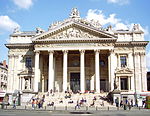Manstein Plan

The Manstein Plan or Case Yellow (German: Fall Gelb) also known as Operation Sichelschnitt (German: Sichelschnittplan, from the English term sickle cut), was the war plan of the German armed forces (German: Wehrmacht) during the Battle of France in 1940. The original invasion plan was an awkward compromise devised by General Franz Halder, the chief of staff of Oberkommando des Heeres (OKH, Army High Command) that satisfied no one. Documents with details of the plan fell into Belgian hands during the Mechelen incident on 10 January 1940 and the plan was revised several times, each giving more emphasis to an attack by Army Group A through the Ardennes, which progressively reduced the offensive by Army Group B through the Low Countries to a diversion. In the final version of the plan, the main effort of the German invasion was made against the Ardennes, the weakest part of the Allied line, where the defence was left to second-rate French divisions in the Second Army and the Ninth Army, on the assumption that the difficulty of moving masses of men and equipment would give the French plenty of time to send reinforcements if the area was attacked. The Seventh Army, which had been the most powerful part of the French strategic reserve, had been committed to a rush through Belgium to join with the Dutch Army to the north, in the Breda variant of Plan D, the Allied deployment plan.
Excerpt from the Wikipedia article Manstein Plan (License: CC BY-SA 3.0, Authors, Images).Manstein Plan
Rue de l'Évêque - Bisschopsstraat, City of Brussels Pentagon (Brussels)
Geographical coordinates (GPS) Address Nearby Places Show on map
Geographical coordinates (GPS)
| Latitude | Longitude |
|---|---|
| N 50.85 ° | E 4.35 ° |
Address
Brucity
Rue de l'Évêque - Bisschopsstraat 1
1000 City of Brussels, Pentagon (Brussels)
Belgium
Open on Google Maps










